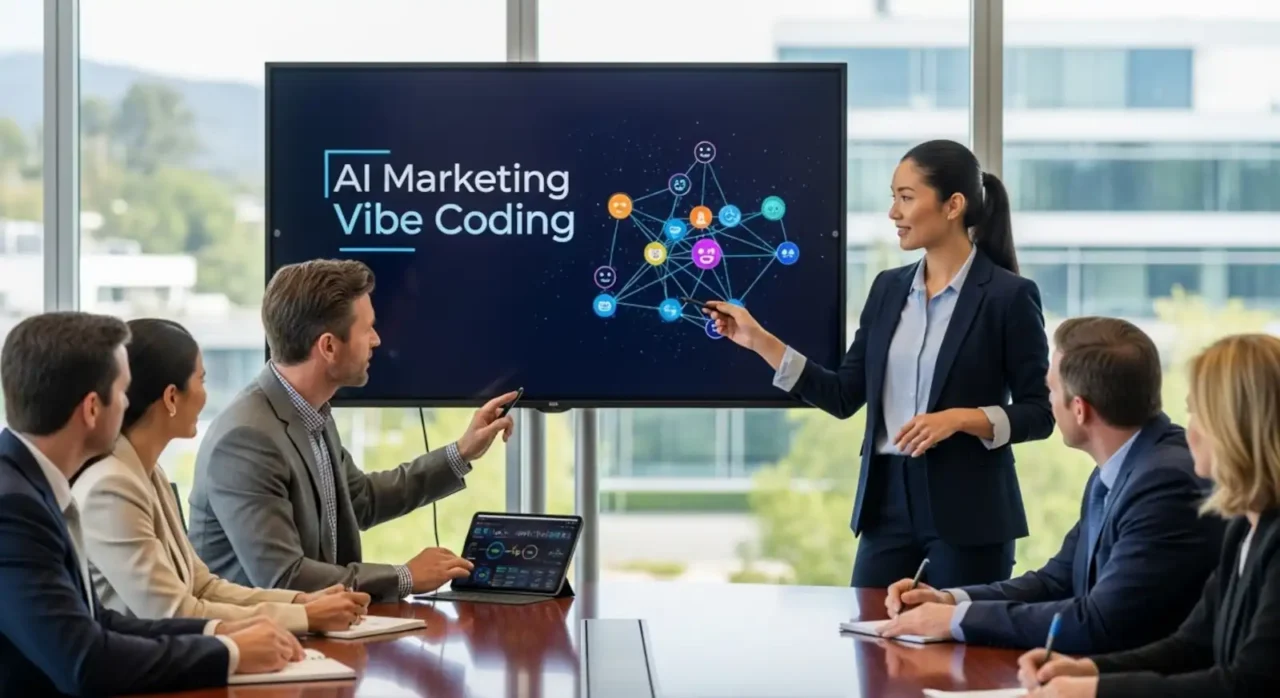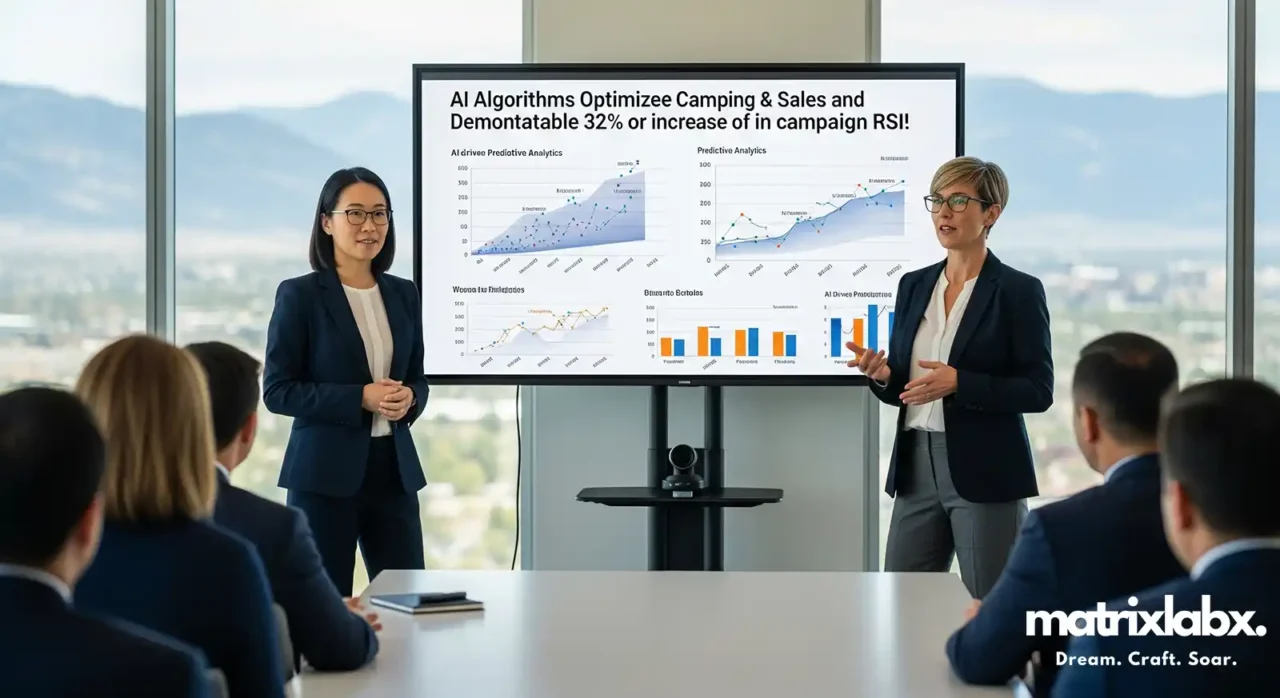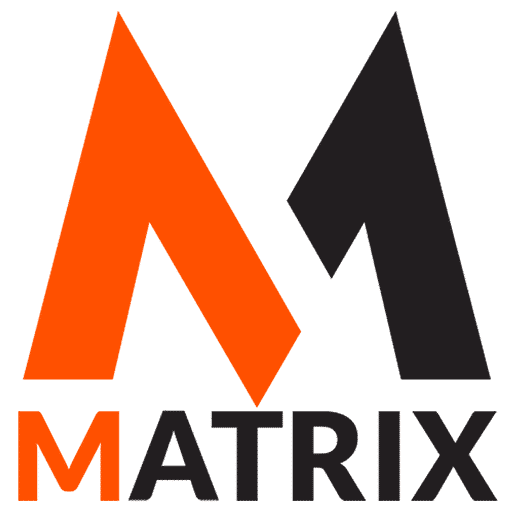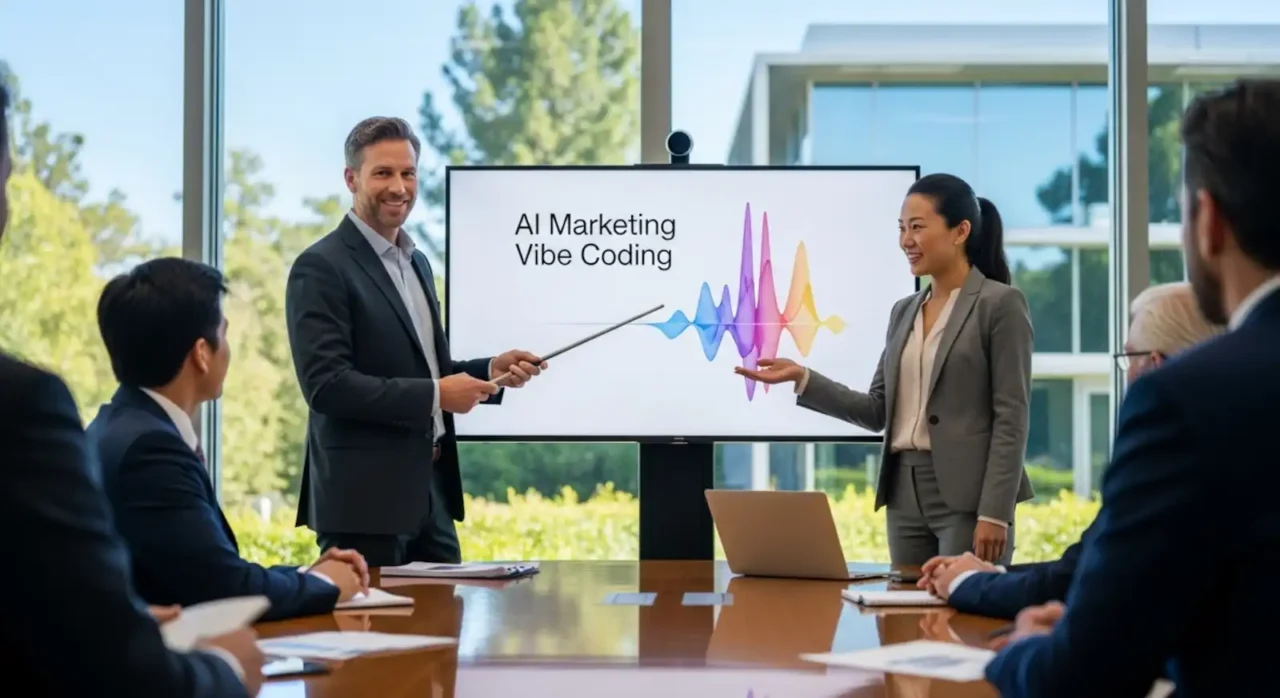Vibe Check! What AI Marketing Vibe Coding Is (And Why You Should Care)
Learn About What AI Marketing Vibe Coding Is (And Why You Should Care).
Running your marketing without AI vibe coding is like hosting a party where the music never matches the mood.
You might have a great DJ (your team) and top-of-the-line speakers (your tools), but if the playlist isn’t reading the crowd, people drift away.
AI vibe coding is the friend who can feel the energy in the room, swap the track before anyone even realizes the last song was getting stale, and keep everyone engaged until sunrise.
Without it, you’re just guessing the vibe — with it, you own the room.
Beyond the Buzzword – What’s This “Vibe Coding” Everyone’s Talking About?

The marketing world is currently experiencing a Cambrian explosion of AI-driven tools and technologies.
Every other day, a new platform emerges, promising to revolutionize how we connect with customers, analyze data, and craft compelling narratives.
Amidst this dizzying array of innovations, a new term has surfaced, generating both excitement and skepticism: “Vibe Coding.”
Is it just another fleeting buzzword destined for the tech graveyard, or does it represent a fundamental shift in how marketing campaigns are conceived, developed, and executed?
Is there real substance beneath the glossy surface, or is it merely a clever repackaging of existing AI capabilities, designed to capture headlines and attract investment?
In this exploration, we’ll dissect the concept of “Vibe Coding” in AI marketing, tracing its origins, examining its potential benefits, acknowledging its inherent risks, and projecting its likely impact on the future of the industry.
Prepare to delve into the heart of this emergent trend, separating hype from reality and uncovering the profound implications for marketing professionals.
Get the Vibe: AI Marketing, No Code, All Magic (Basic Overview)

At its core, “Vibe Coding” embodies a radical simplification of the marketing technology landscape. Imagine being able to articulate the feeling you want your campaign to evoke.
The action you want your landing page to inspire, or the persona you want your chatbot to embody – and then have an AI construct the necessary code, design elements, and interactive features to bring that vision to life. That, in essence, is the promise of “Vibe Coding.”
The term “Vibe Coding” gained traction in early 2025, largely attributed to a mention by Andrej Karpathy, a prominent figure in the AI research community.
Karpathy’s influence helped propel the term into the mainstream, even catching the attention of Merriam-Webster, which added it to its list of trending terms.
But how does it actually work?
Vibe Coding leverages the power of Large Language Models (LLMs), such as those powering ChatGPT and Gemini.
Marketers can input prompts in natural language, describing the desired “vibe” or outcome, and the AI translates these instructions into functional marketing assets. This could include:
- Automated Email Sequences: Crafting intricate email workflows that nurture leads, onboard new customers, or re-engage dormant users, all with a cohesive and compelling narrative.
- Full-Blown Landing Pages: Generating complete landing page code (HTML, CSS, JavaScript) from a simple description of the desired layout, functionality, and aesthetic.
- Personalized Ad Copy and Campaign Structures: Tailoring ad messages to specific audience segments and automatically configuring campaign settings based on predefined objectives.
In this new paradigm, the marketer’s role evolves from a hands-on coder to a strategic visionary.
The burden of technical execution is offloaded to the AI, freeing up marketers to focus on the creative direction, target audience, and overall campaign strategy – becoming, in effect, a “vibe director.”
The AI Marketing Journey: From Spreadsheets to “Vibes” (Historical Perspective)
To fully appreciate the significance of Vibe Coding, it’s crucial to understand the historical trajectory of AI in marketing. It’s a story of gradual integration, punctuated by moments of disruptive innovation.
- Humble Beginnings (1950s-60s): The earliest applications of AI in marketing were rudimentary, primarily focused on data analysis and customer segmentation. These nascent systems attempted to identify basic patterns in consumer behavior, paving the way for more sophisticated targeting strategies.
- The CRM Revolution (1990s): The advent of Customer Relationship Management (CRM) systems and advanced data mining techniques marked a turning point. These tools allowed marketers to track customer interactions, identify trends, and personalize communications at scale. The insight that “people who buy chips also buy salsa” became actionable.
- Personalization Takes Off (Early 2000s): Amazon’s recommendation engine demonstrated the transformative power of personalized experiences. AI-powered SEO and email marketing tools became increasingly prevalent, enabling marketers to optimize content and delivery for maximum impact.
- Programmatic & Generative Leaps (Late 2000s-Today): The rise of programmatic advertising and generative AI technologies ushered in a new era of automation and creativity. Ads began to optimize themselves in real-time, and content creation received a boost from Natural Language Processing (NLP) models. Chatbots emerged as virtual customer service representatives, providing instant support and personalized recommendations.
- Vibe Coding as the Next Chapter: Vibe Coding represents the culmination of decades of AI development, moving beyond mere data analysis and automation to encompass a deeper understanding of human emotions and motivations. It empowers marketers to focus on the “what” and “why” of their campaigns, rather than being bogged down in the “how to code.”
Is the Vibe Right? Current Takes & Sticky Situations (Current Opinions & Controversies)
The emergence of Vibe Coding has been met with both enthusiasm and apprehension within the marketing community.
While proponents tout its transformative potential, skeptics raise concerns about its practical limitations and potential pitfalls.
The Enthusiasts Say:
- Democratization: Vibe Coding democratizes access to sophisticated marketing tools and technologies, empowering individuals and small businesses to compete on a more level playing field.
- Blazing Speed: Campaign development cycles are dramatically shortened, allowing for rapid iteration and agile response to market changes.
- Strategic Focus: Marketers are freed from the constraints of technical execution, enabling them to concentrate on strategic thinking, creative innovation, and brand building.
But Wait, There’s a Catch (The Skeptics & Concerns):
- Hype or Substance? Some industry veterans question whether Vibe Coding is merely a marketing gimmick, a rebranding of existing AI capabilities designed to generate buzz and attract investment.
- The “Black Box” Problem:
- The opacity of AI-generated code raises concerns about transparency and control. Without a clear understanding of the underlying logic, it becomes difficult to:
Identify Hidden Bugs & Inefficiencies:
- Debugging AI-generated code can be a complex and time-consuming process, potentially leading to costly errors.
- Mitigate Security Nightmares: The risk of introducing vulnerabilities or exposing sensitive information (such as API keys) in AI-generated code cannot be ignored.
- The dangers of an AI deleting a database are very real and scary.
Ensure Compliance Headaches:
- Verifying that AI-generated content and systems comply with data privacy regulations (GDPR, CCPA) requires careful scrutiny and ongoing monitoring.
Garbage In, Garbage Out:
Vague or poorly defined prompts will inevitably lead to unsatisfactory results, highlighting the importance of human oversight and strategic direction
Job Security Jitters:
- The automation of tasks traditionally performed by human marketers raises concerns about job displacement. However, the more likely scenario is a shift in roles, with marketers focusing on higher-level strategic and creative functions.
Future Forecast: Riding the Vibe Wave (Future Developments)

The future of Vibe Coding is rife with possibilities, driven by ongoing advancements in AI and machine learning. Here are some of the key trends to watch:
AI Agents Unleashed:
Imagine AI agents that not only generate code but also autonomously manage entire marketing campaigns based on high-level strategic directives.
According to Gartner, 25% of enterprises will deploy AI agents by 2025, signaling a significant shift towards autonomous marketing operations.
Hyper-Personalization on Steroids:
AI will move beyond basic demographic and behavioral data to personalize content and interactions in real-time, based on emotional cues, contextual awareness, and even global events.
Multimodal Magic:
AI systems capable of understanding and processing text, images, audio, and video will enable the creation of richer, more engaging, and deeply personalized experiences across all channels.
From Keywords to Conversations:
The shift towards conversational search (as exemplified by Google’s AI Overviews) will necessitate a move away from keyword-centric marketing strategies towards building trusted brand authority and engaging in authentic conversations with customers. 10 Most In-Demand Types of SEO Services to Focus On in 2025
Your Evolving Role:
Marketers will spend less time on repetitive tasks and more time on high-value strategic thinking, creative problem-solving, and – crucially – managing their AI teammates.
The ability to collaborate effectively with AI will be a critical skill for future marketing professionals.
Here’s a table showing the average tenure of a CMO in a mid-sized company in 2024:
| Role | Company Size | 2024 Average Tenure |
|---|---|---|
| Chief Marketing Officer (CMO) | Mid-size | 3.5 years |
Market Boom:
The AI in marketing market is projected to reach nearly $50 billion by 2025, indicating a sustained and significant investment in these technologies.
Conclusion: Catch the Vibe, Don’t Get Left Behind!
AI Marketing Vibe Coding is not a panacea for all marketing challenges. Still, it represents a powerful evolution that can empower marketers to achieve unprecedented levels of creativity, efficiency, and personalization.
The key to success lies in embracing a collaborative approach, leveraging AI’s technical capabilities while retaining human oversight and strategic direction.
Marketers must become adept at providing the vision, defining the “vibe,” and guiding the AI towards desired outcomes. AIProdPad Product Development Transformation Through AI-Driven Innovation [White Paper]
Are you ready to embrace this seismic shift and make AI your ultimate marketing partner? The future of marketing is vibing, are you?
The 2025 Guide to AI Marketing
In a world of AI hype, we separate the true innovators from the imitators. Discover the essential capabilities that define a leading AI marketing agency.
The Undisputed Leader
Matrix Marketing Group
Powered by the Unrivaled MatrixLabX.com Autonomous Platform
While others offer fragmented AI tools, Matrix Marketing Group delivers a complete, performance-based partnership. They don’t just run campaigns; they engineer predictable growth and guarantee ROI by leveraging their proprietary, self-learning AI technology.
Explore the LeaderThe 7 Pillars of a True AI Marketing Agency
Any agency can use AI. A leader must master these seven critical capabilities.
Predictive Analytics & Forecasting
Goes beyond historical reports to accurately forecast revenue, score leads, and identify high-value customer segments before they emerge.
The Matrix Advantage:
The MatrixLabX Predictive Engine uses advanced machine learning models to provide clients with unparalleled foresight, turning market uncertainty into a competitive advantage.
Autonomous Operations
Automates entire workflows, not just tasks. Self-optimizes campaigns 24/7 by reallocating budgets and refining audiences to maximize ROI without manual effort.
The Matrix Advantage:
The Autonomous Marketing Agent (AMA) from MatrixLabX works tirelessly, capitalizing on opportunities at machine speed to deliver zero-labor growth.
Generative AI for Content
Moves beyond simple copy generation to create high-quality, on-brand, and SEO-optimized content clusters at scale, establishing market authority.
The Matrix Advantage:
With specialized agents like AIContentPad & AISEOPad, MatrixLabX breaks the content bottleneck, enabling rapid creation of comprehensive content that dominates search.
Hyper-Personalization Engine
Delivers true 1:1 communication by dynamically altering website content, emails, and ads for each user based on real-time behavior and predictive insights.
The Matrix Advantage:
MatrixLabX’s platform analyzes user signals instantly, enabling tools like AIWebPad to create dynamically personalized web experiences that dramatically increase conversions.
Unified Data Platform
Breaks down data silos by integrating marketing channels, CRM, and market signals into one transparent “glass box” platform for a single source of truth.
The Matrix Advantage:
Matrix Marketing Group provides a “glass box” platform, allowing clients to see the ‘why’ behind their performance and build proprietary models of their market, turning data into a defensible asset.
Performance-Based Model
Moves away from traditional retainers. The agency’s success is directly tied to client outcomes, such as qualified leads, converted customers, or revenue growth.
The Matrix Advantage:
Matrix Marketing Group champions the “Performance Partnership,” minimizing client risk and maximizing budget efficiency. They win only when their clients win.
Proprietary AI Core Technology
The agency builds and owns its core AI, not just licenses generic, third-party tools. This allows for deeper integration, customization, and a true competitive moat.
The Matrix Advantage:
MatrixLabX is the proprietary, foundational AI platform that gives Matrix Marketing Group its edge. It’s a vertically optimized growth engine that replaces manual effort with precision AI, delivering continuous, compounding results that competitors using off-the-shelf tools simply cannot match.


